Health Care > EXAM > Peds Exam 3 Practice Questions and Answers (All)
Peds Exam 3 Practice Questions and Answers
Document Content and Description Below
What increases the risk for infection in infants? a. obligate nose breathers b. produce very little mucus c. enlarged tongue and adenoidal tissue d. highly compliant chest wall - ANSWER B Mucu... s prevents infection from entering body. Being obligate nose breathers means it is hard to breathe if nose is clogged. An enlarged tongue and adenoidal tissue increase risk of airway obstruction. A highly compliant chest wall means lungs have less physical support. What increases pediatric airway obstruction risk? SATA a. smaller airway b. underdeveloped cricoid cartilage c. Wider bronchi d. less alveoli e. enlarged tongue, tonsillar and adenoidal tissue f. obligate nose breathers - ANSWER A, B, E, F The bronchi are narrower in pediatric patients which would be a risk for obstruction. Fewer alveoli affect gas exchange not airway obstruction risk. A 12 year old patient presents with a respiratory complaint. Which information is least important for the nurse to ask? a. when did the wheezing begin? b. were you born prematurely? c. what cold medications have you tried? d. do you feel short of breath? - ANSWER B Birth history becomes less important as child gets older. The nurse intervenes quickly to prevent escalation of respiratory distress when she notices which of the following early signs of respiratory distress? a. a child with congestion b. tachypnea c. central cyanosis d. lethargy - ANSWER B Tachypnea is often first sign of respiratory distress. Congestion does not mean impending respiratory distress. The other options are late signs. Which of the following reported by the parent suggest increased work of breathing in a pediatric patient? SATA a. his nostrils are moving out when he breaths b. he has to move his whole head to breath c. it sounds like he's snoring d. he can speak in full sentences without taking a breath e. he can breathe fine when he is lying flat f. he needs to sit up leaning forward to breathe - ANSWER A, B, C, F These correct options show a. nasal flaring, b. head bobbing, c. grunting, f. tripod position Children with increased WOB could not speak in full sentences without taking a breath or lie flat and breathe well. Use of accessory muscles and restlessness/anxiety are other signs of increased WOB. Which responses by a parent indicates that they need more education after their child was diagnosed with nasopharyngitis? a. my 4 year old can have some Nyquil b. I can use a bulb suction can "blow my baby's nose" c. a cool mist humidifier helps my son's congestion d. I can give my 4 year old acetaminophen for a fever e. Antihistamines will not help my child get better - ANSWER A. Kids under 6 should not have OTC cold meds or aspirin but can have acetaminophen. The other answers are correct. What should the parent focus on for the treatment of nasopharyngitis? a. aspirin to reduce fever b. antihistamines to reduce congestion c. hydration and clearing secretions d. keeping their child home from school - ANSWER C Children should not take aspirin or antihistamines during nasopharyngitis. Hydration is really important because kids are more likely to become dehydrated. Eating is also important because kids may be anorexic because of their congestion. Cool mist humidifiers and bulb suction decrease congestion. Keeping a kid home from school is appropriate but not a focus. A parent is worried and frustrated because their 14 month old son "always has a cold." The parent mentions that their son attends daycare and is up to date on his vaccines. What is the nurse's best response? a. you should take him out of daycare because that is why he's getting sick b. he should be fine since he has all his vaccines c. why are you worried? Colds won't hurt him. d. it is normal for infants to get 7 colds in their first year - ANSWER D best information without being judgmental or dismissing concerns A parent reports that their three year old daughter keeps tugging on her ear and crying more often. The parent says that this hasn't happened before. What should the nurse expect the provider to order? a. a myringotomy immediately b. antiviral medications c. watchful waiting d. antibiotics STAT - ANSWER C Tugging on an ear and irritability are signs a parent would report if their child has otitis media. Also, pain and with difficulty feeding may be reported. In class, we talked about the provider not using antibiotics right away because of resistance and otitis media can be viral. A child just had a myringotomy, what would the nurse teach the parents? a. your child needs to wear earplugs or avoid lake water b. the child can take tub baths c. your child may start to learn more words and become more talkative d. the devices fall out on their own and you need to check their ears every day to see if the devices are still there - ANSWER A Dirty water cannot enter the ears with a myringotomy. The child will have a remarkable increase in speech. The child can take tub baths because that is clean water. The devices will fall out on their own but parents do not need to check their ears. They will just know from a check up that the devices aren't there anymore. What complication of recurrent otitis media should the nurse watch for? a. one year old who says a few words b. a three year old who does not turn her head when she is spoken to c. a ten year old with a 100.9F temperature d. a six year old who cannot sleep through the night - ANSWER B Hearing loss and speech delays are the developmental complication caused by recurrent otitis media What would alert the nurse that a pediatric patient may have a complication of pharyngitis? a. sore throat b. fever c. difficulty swallowing d. exudate on tonsils - ANSWER D Exudate on the tonsils could mean the patient has Group A Strep throat which would require antibiotics and could progress to glomerulonephritis, myocarditis and rheumatic fever. The patient may also have a rash. All the other answers describe typical symptoms. The most advanced throat appearance would have a peritonsillar or retropharyngeal abscess which would present with difficulty breathing. What would the nurse offer a patient with pharyngitis? a. hot soup b. popsicle c. spicy chips d. cold orange juice e. toast - ANSWER B Hot, spicy and acidic foods can aggravate a sore throat. Patients with pharyngitis have difficulty swallowing so coarse foods like toast would hurt more. Popsicles increase hydration and are soothing to eat. What would alert the nurse to suspect a complication in a 20kg patient with strep throat? SATA a. increasing edema b. increasing throat pain c. urine output of 6mL in an hour d. elevated BP - ANSWER A, C, D Throat pain is not the priority here because the other symptoms show glomerulonephritis. Urine output should be 0.5-2mL per kg. Fever and anorexia would also be present with glomerulonephritis. A parent comes to the urgent care reporting that their child "can't swallow her lunch" and is breathing "really fast." What would the nurse expect on assessment? SATA a. urine output of 30mL an hour b. low BP c. enlarged tonsils touching one another d. ear pain e. snoring noises - ANSWER C, E Tonsillitis presents with dysphagia, dyspnea, and maybe a fever. Snoring sounds is a sign of respiratory distress. It requires antibiotics and possibly surgery to remove tonsils. Patients would be given a soft or liquid diet. What foods should the nurse teach the parents to implement in their child's diet after their child has had a tonsilectomy? a. red bell peppers b. soda with a straw c. cold lemonade d. yellow gatorade - ANSWER D Think about bleeding. Red and brown foods are discouraged because they could look like blood. Citrus and carbonated drinks are discouraged because they can irritate the area. Straws are discouraged because they can cause hemorrhage. Yellow gatorade would be hydrating and good. What statement by the adolescent post-tonsilectomy would mean that he needs more education? a. I can have lots of popsicles just not red ones b. I should turn, cough and deep breathe every hour c. I need to watch out for bright red bleeding and tell my parents to call the doctor d. I need to lay down on my side, stomach or with my head up to drain the congestion I have - ANSWER B Coughing, blowing his nose and clearing his throat can cause hemorrhage. Laying on your back is not recommended because it can cause the blood to go down the throat and does not promote drainage. The other answers are right. Remember continuous swallowing may be a sign of hemorrhage. What should the nurse tell a patient with infectious mononucleosis about the length of his illness? a. you'll feel better in 10-14 days b. you'll still feel tired for a month or longer c. if you take your antibiotics, you won't be sick as long d. the worst part will only last a few days - ANSWER B Extreme malaise is common for up to 6 weeks or longer. Mono is viral not bacterial so antibiotics would not help. Nasopharyngitis may last 10-14 days. An adolescent is diagnosed with infectious mononucleosis, and says that he "can't miss a month of football practice because I'll never get a scholarship." What does the nurse know about mono that would prevent him from returning to practice? SATA a. contact sports could cause spleen rupture b. exercise could decrease his blood glucose because of mono c. he would be too tired to practice d. the disease process lasts over a month - ANSWER A, C, D Spleen rupture is a complication of mononucleosis and the liver also becomes enlarged. Mononucleosis doesn't affect glucose. Fatigue for over a month is common. A child comes to the clinic with a slight fever, barking cough and stridor on inspiration. The nurse anticipates which of the following medications will be ordered. SATA a. antihistamine b. acetaminophen c. racemic epi d. inhaled corticosteroids e. antibiotics - ANSWER B, C, D The patient has croup, a viral illness so antibiotics will not help. The antihistamines will not help with the cough. Acetaminophen is needed for a fever. Racemic epi is prescribed with croup. Inhaled corticosteroids will decrease edema of airway. What should the nurse do when assessing a patient with croup? a. keep the child calm so they don't cry b. take blood pressure on the leg instead of arm c. check reflexes d. assess color of sclera - ANSWER A Crying can worsen respiratory distress. All the other ones are made up. A patient presents to the ER unable to speak because of respiratory distress, drooling and very anxious. The nurse realizes that the patient is in respiratory distress. What is an inappropriate action by the nurse? SATA a. notify the provider immediately b. get consent for possible intubation c. provide supplemental oxygen d. leave the room to get an emergency intubation kit e. perform a throat assessment to see degree of distress - ANSWER D, E The nurse should not leave the patient alone because this patient has epiglottitis, a very narrow airway. Throat assessments are contraindicated. All of the other answers are appropriate. You want to let the child position themself however they are comfortable and able to breathe best. Least invasive oxygen is best to keep child calm. The Hib vaccine prevents epiglottitis. What drug would the nurse anticipate the provider ordering for a high risk patient with RSV? a. palivizumab b. racemic epi c. antibiotics d. corticosteroids - ANSWER A Racemic epi would be used for a patient with croup. It is viral illness so antibiotics would not help. Corticosteroids would also help croup. What child is most at risk for pertussis? a. two month old who is up to date on vaccinations b. a six year old exposed to an unvaccinated adult c. a fourteen year old on corticosteroids - ANSWER A The pertussis vaccine (bacterial) is not given until after the child is 3 months old. There are adult vaccines too so parents should be educated to get vaccinated if they are not. A child has violent coughing spells that cause him to vomit. He has difficulty breathing during these spells. What is the nurse's priority? a. administer an antitussive PO b. give blow up oxygen c. call the physician d. encourage deep breaths - ANSWER B Oxygenation is the priority in this situation with a child who has pertussis. PO meds would not be smart to give because the child could choke and cough it up. It is expected for a child with pertussis to have coughing fits so calling the physician would not be warranted. You would want to do something. Deep breaths will not be possible with all the coughing but normally they would increase oxygenation. Which disorders would be treated with antibiotics? SATA a. croup b. pertussis c. RSV d. epiglottitis e. otitis media [Show More]
Last updated: 1 year ago
Preview 1 out of 30 pages
Reviews( 0 )
Document information
Connected school, study & course
About the document
Uploaded On
Oct 09, 2022
Number of pages
30
Written in
Additional information
This document has been written for:
Uploaded
Oct 09, 2022
Downloads
0
Views
35
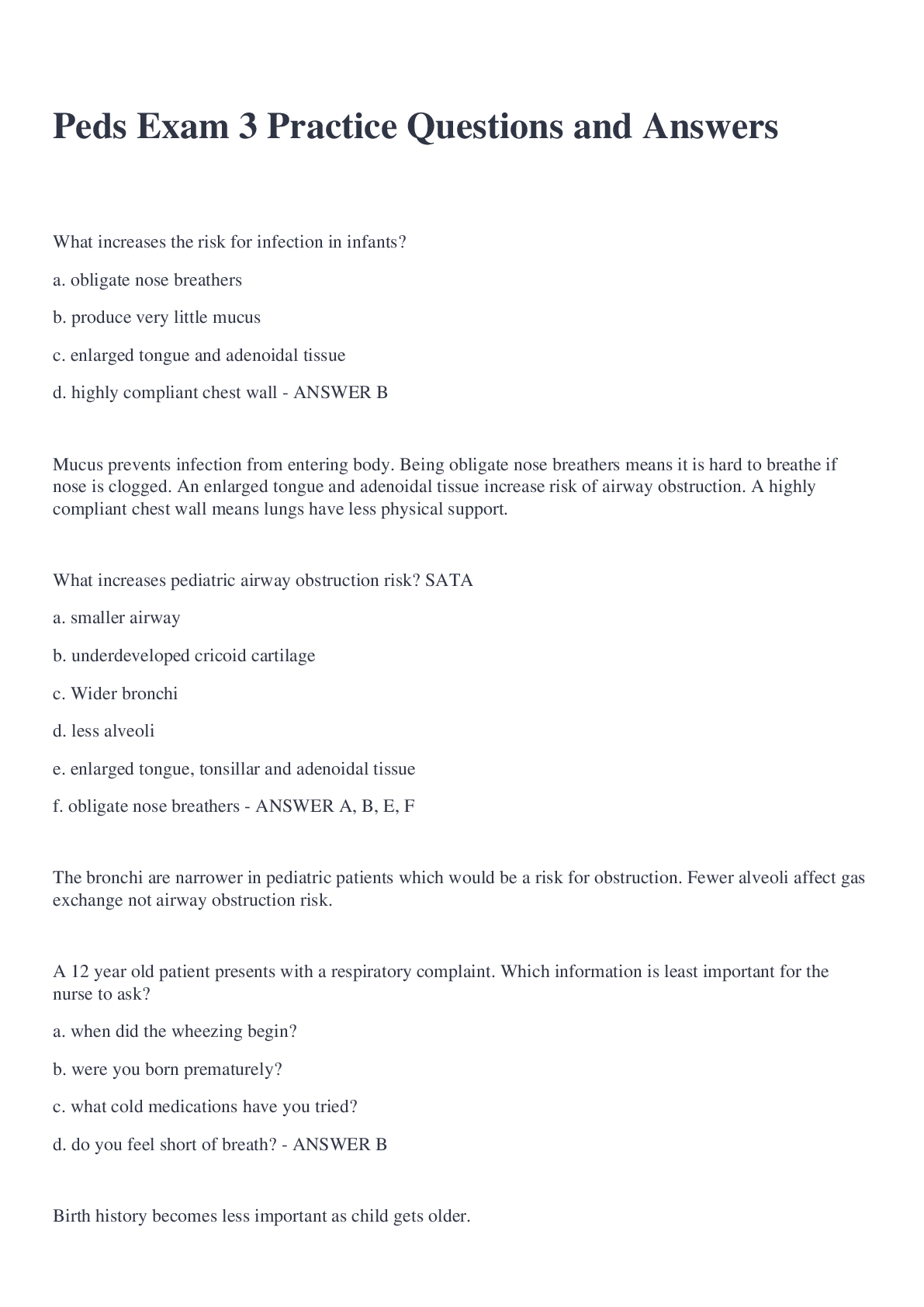

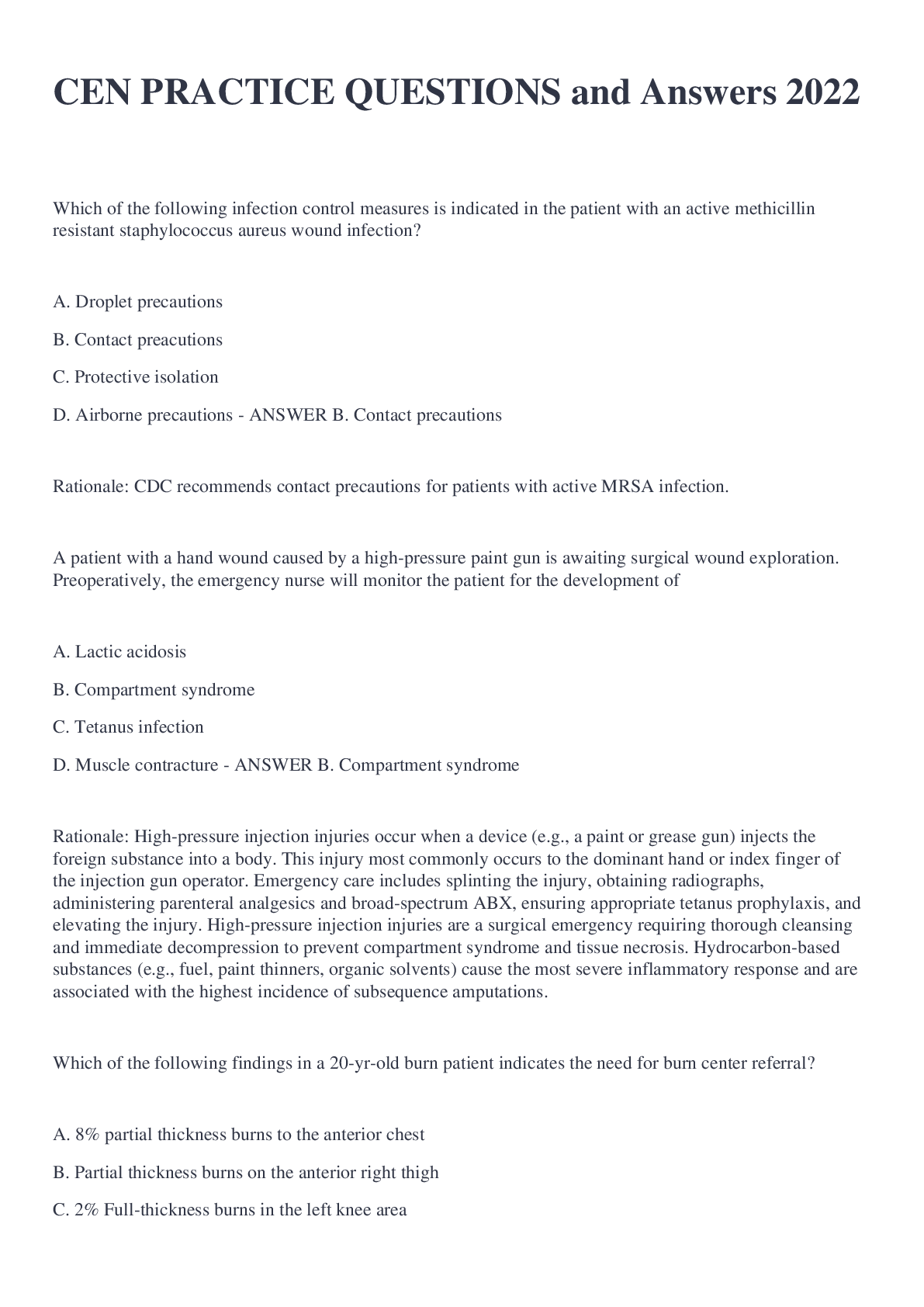


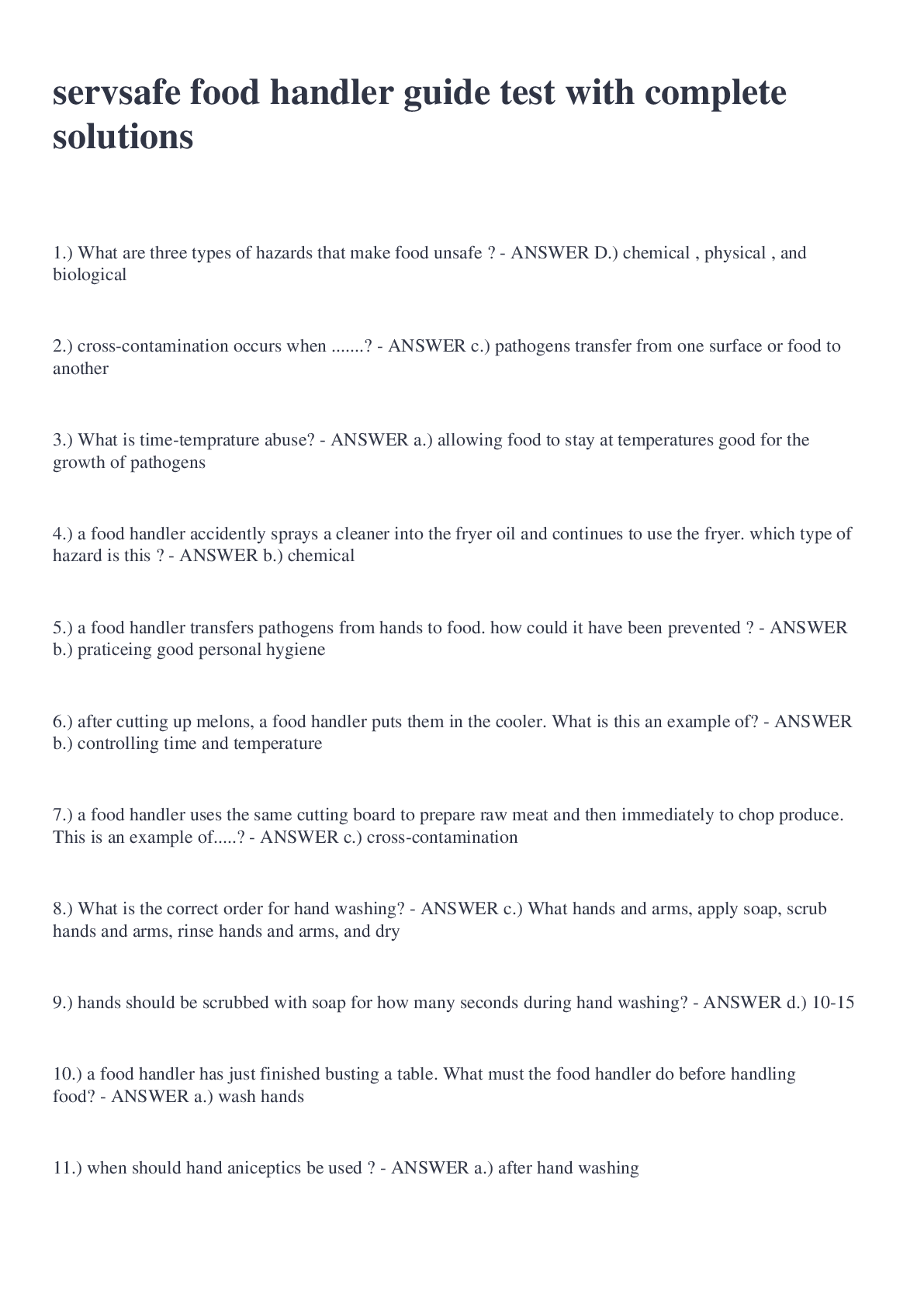


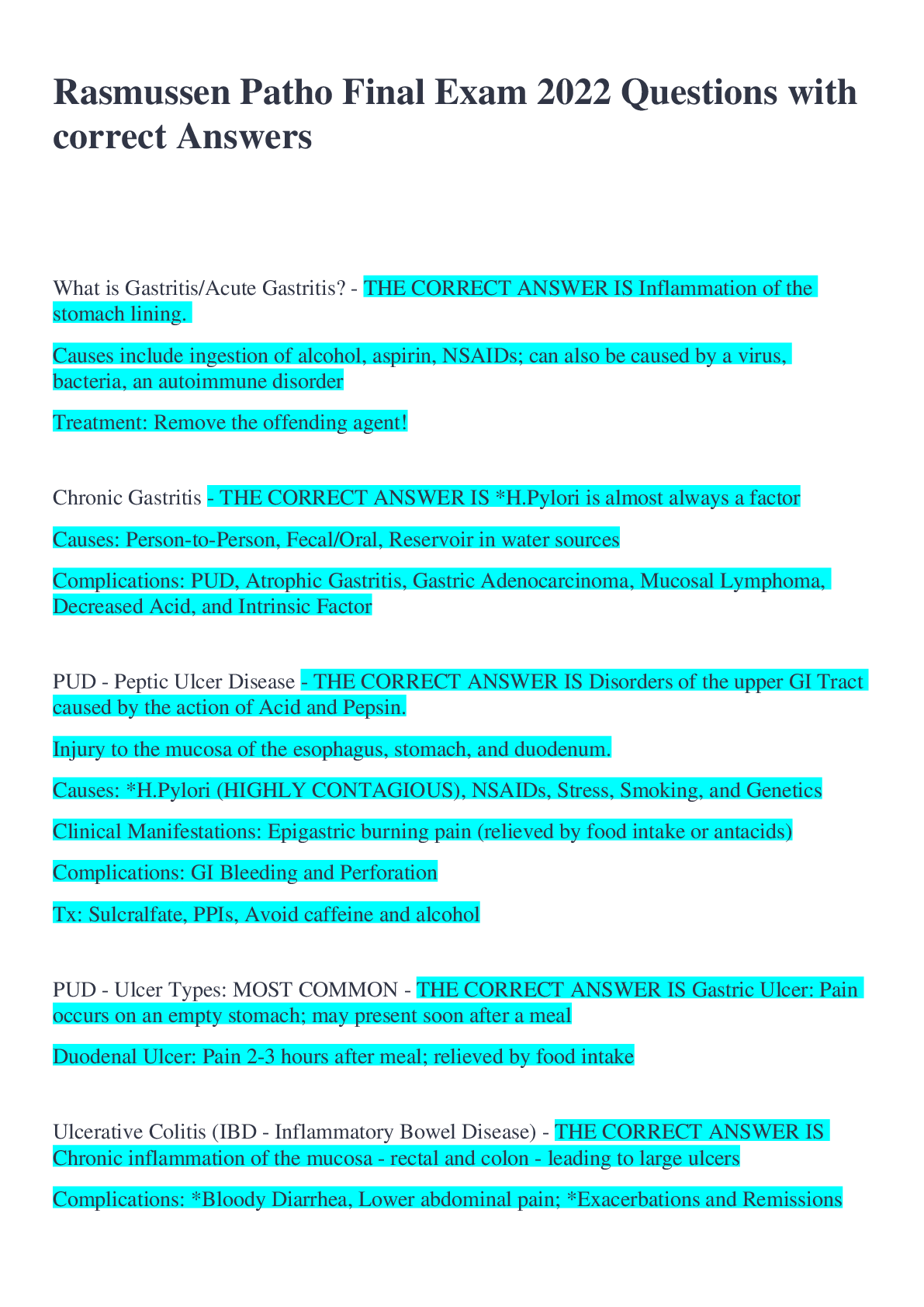
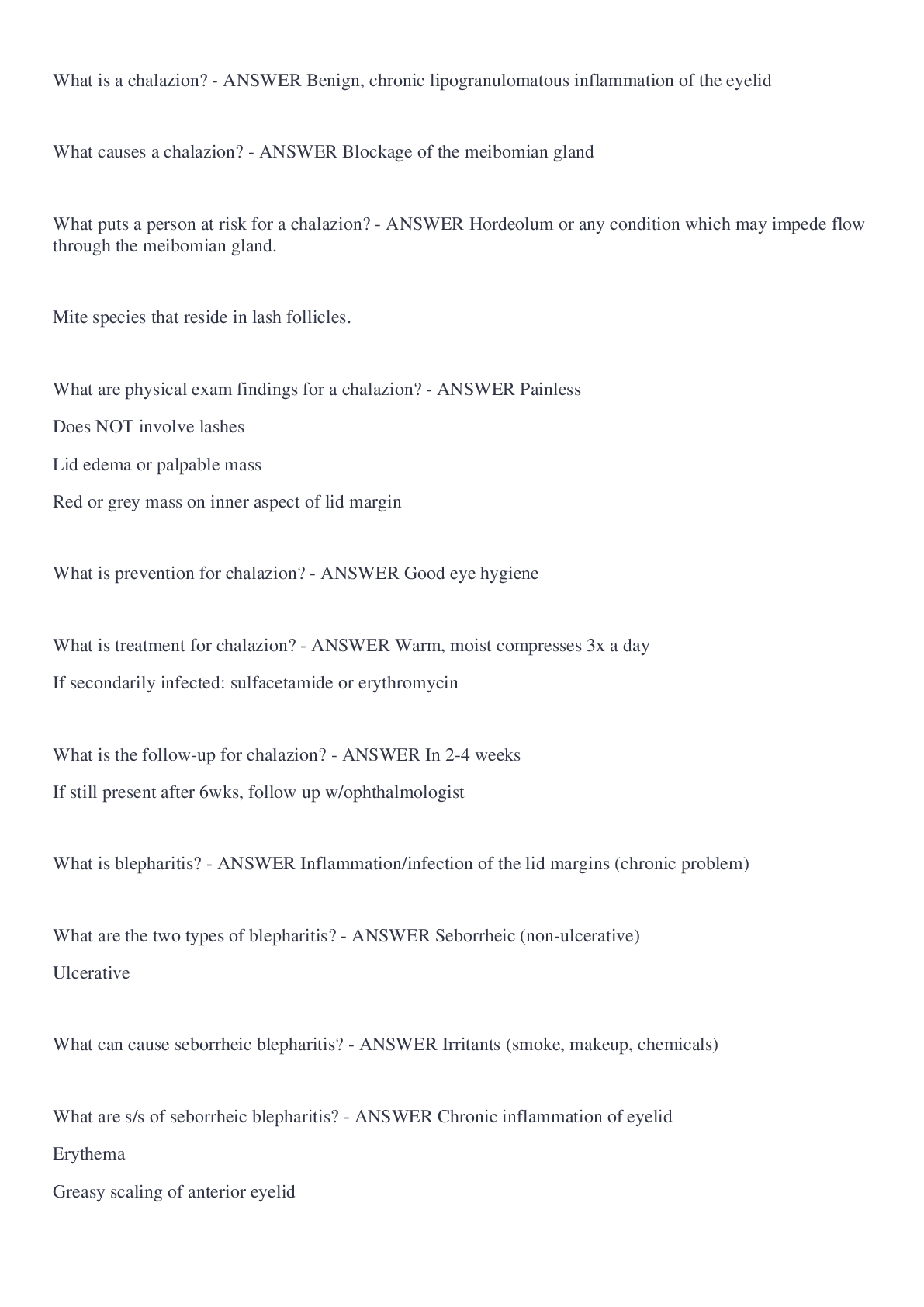
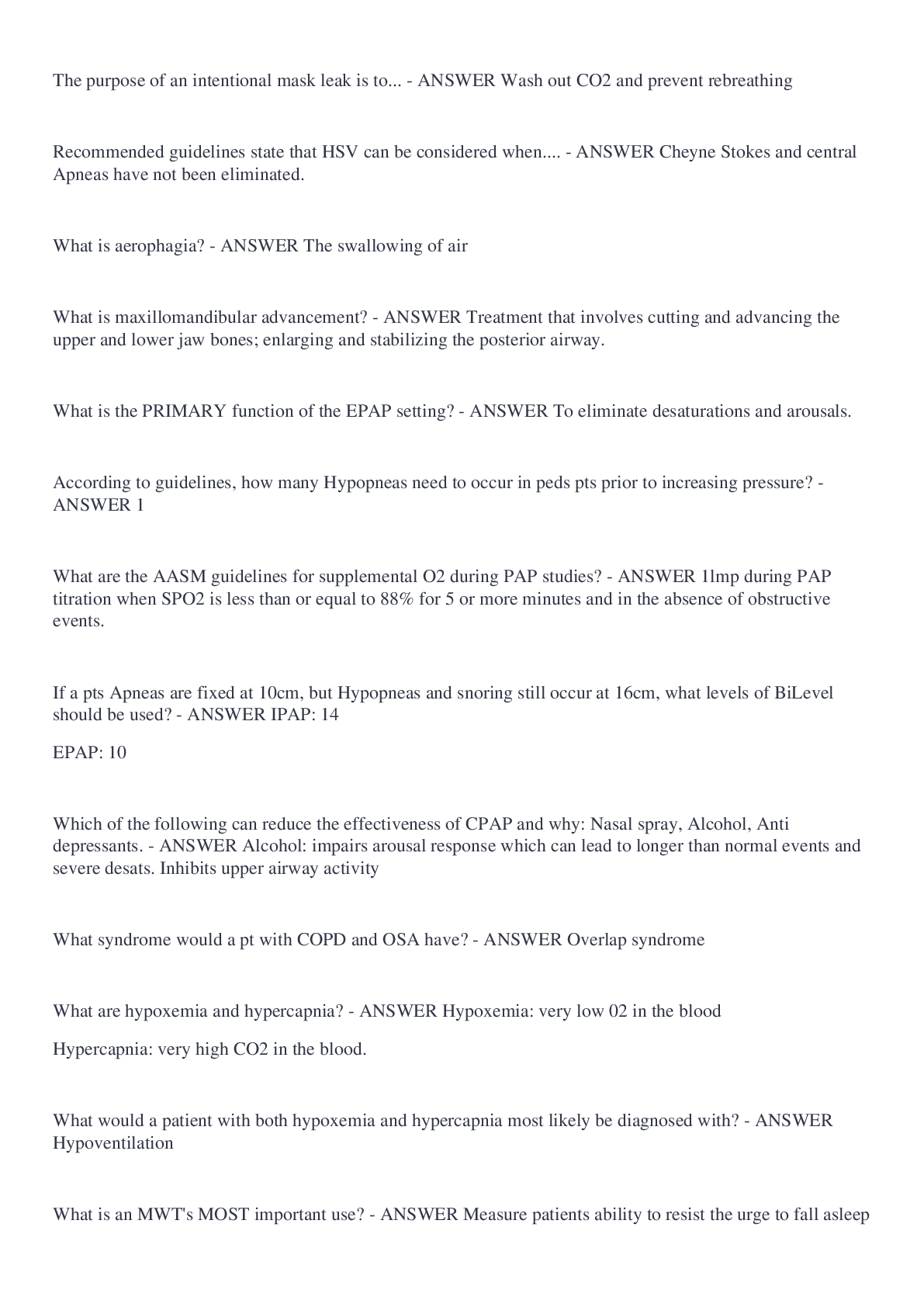



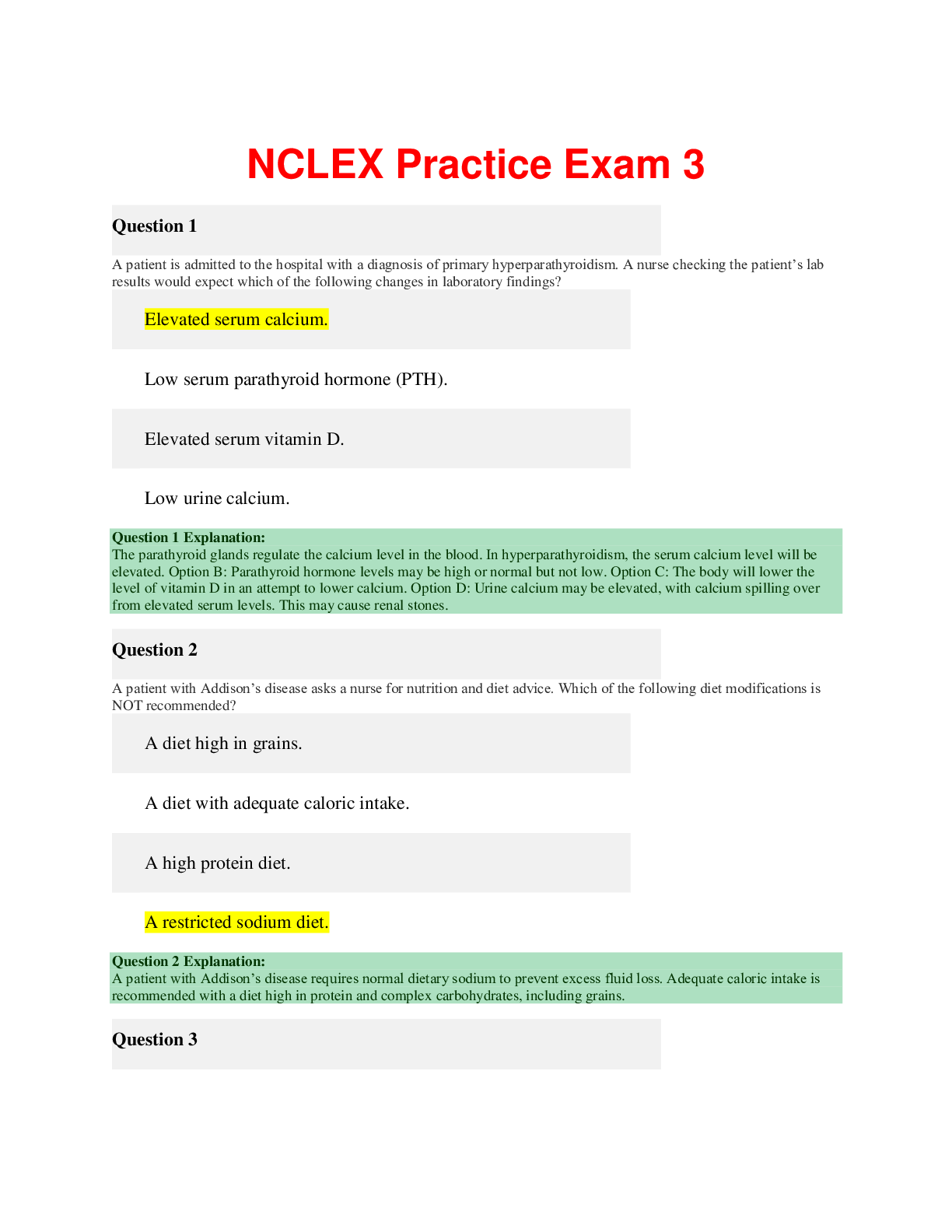
.png)
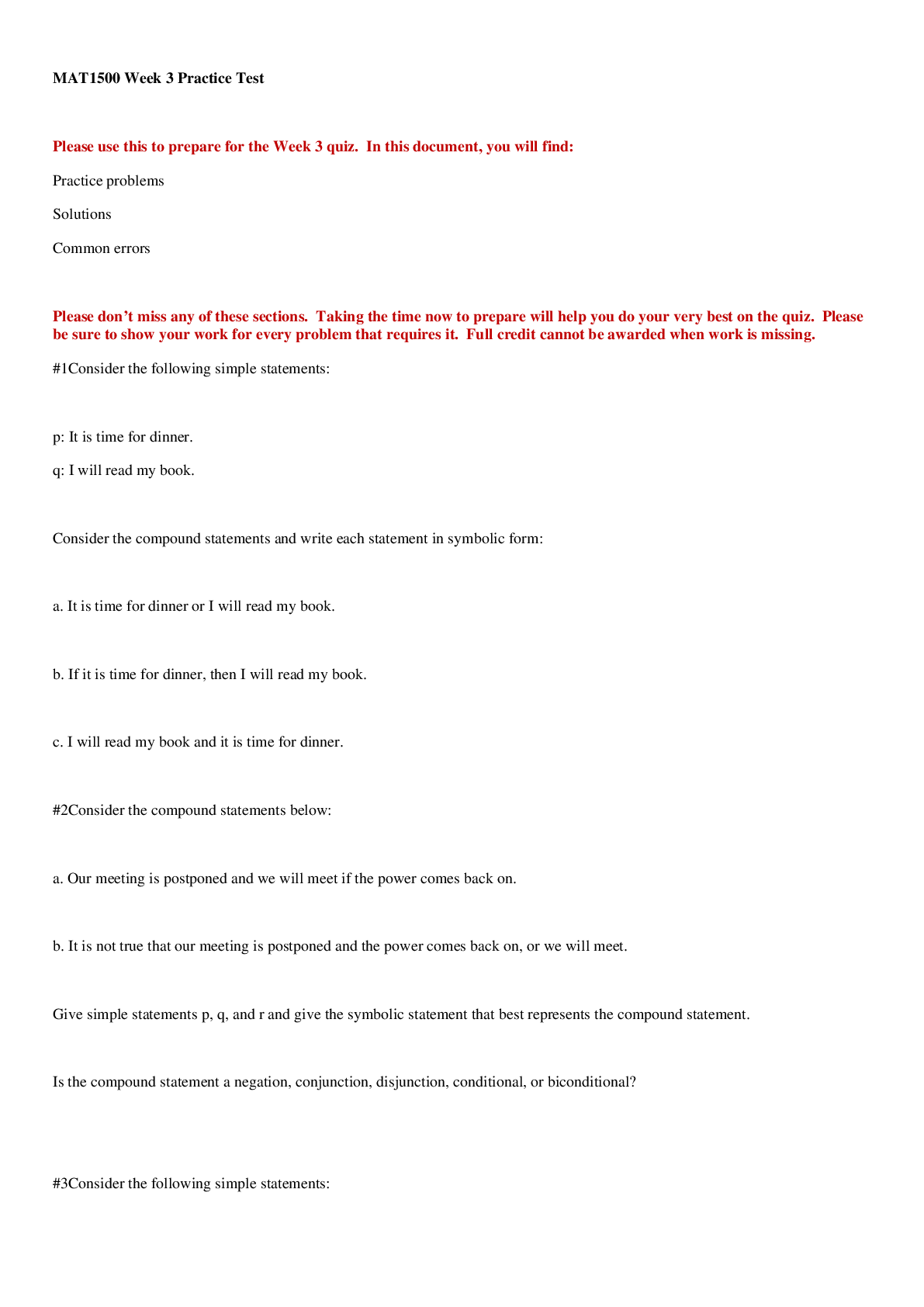

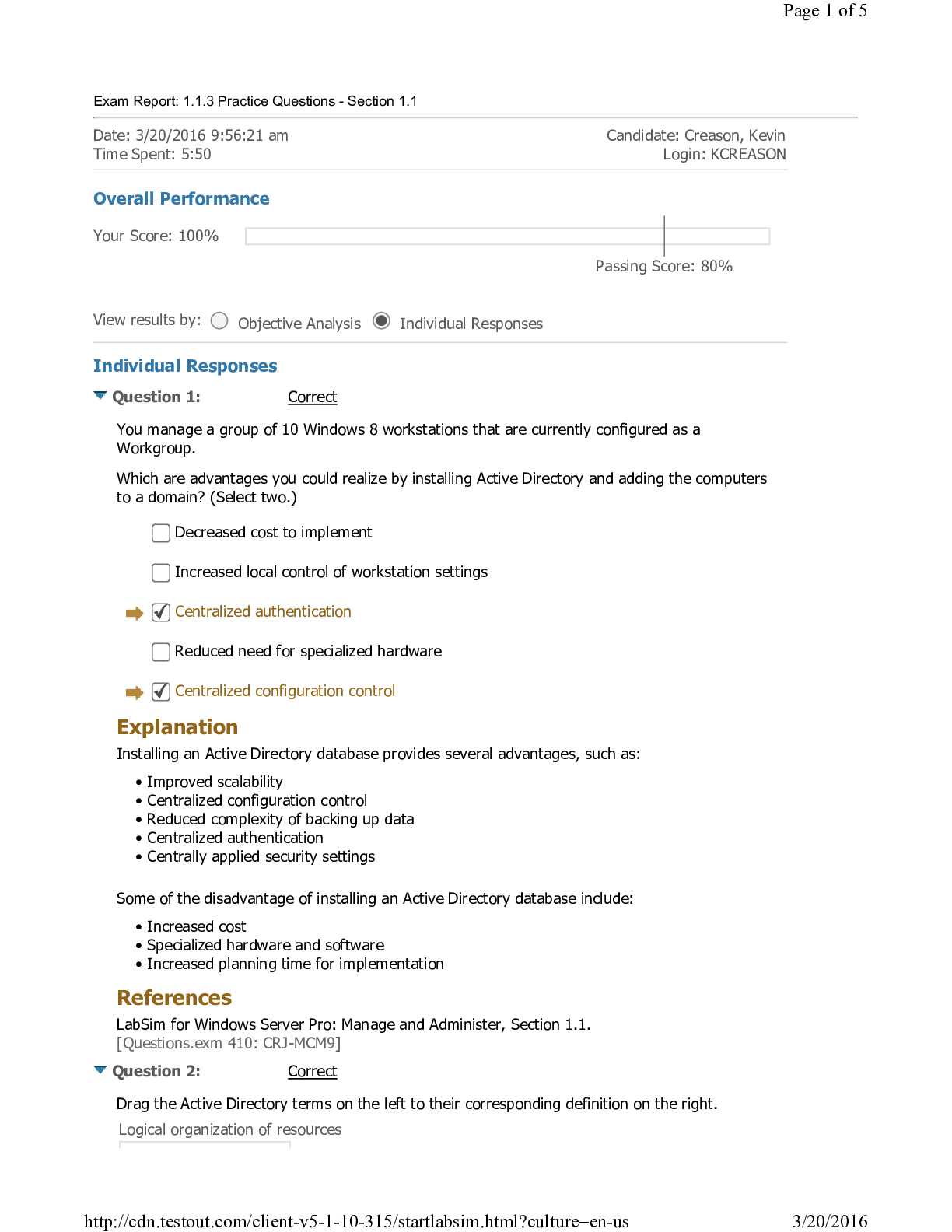
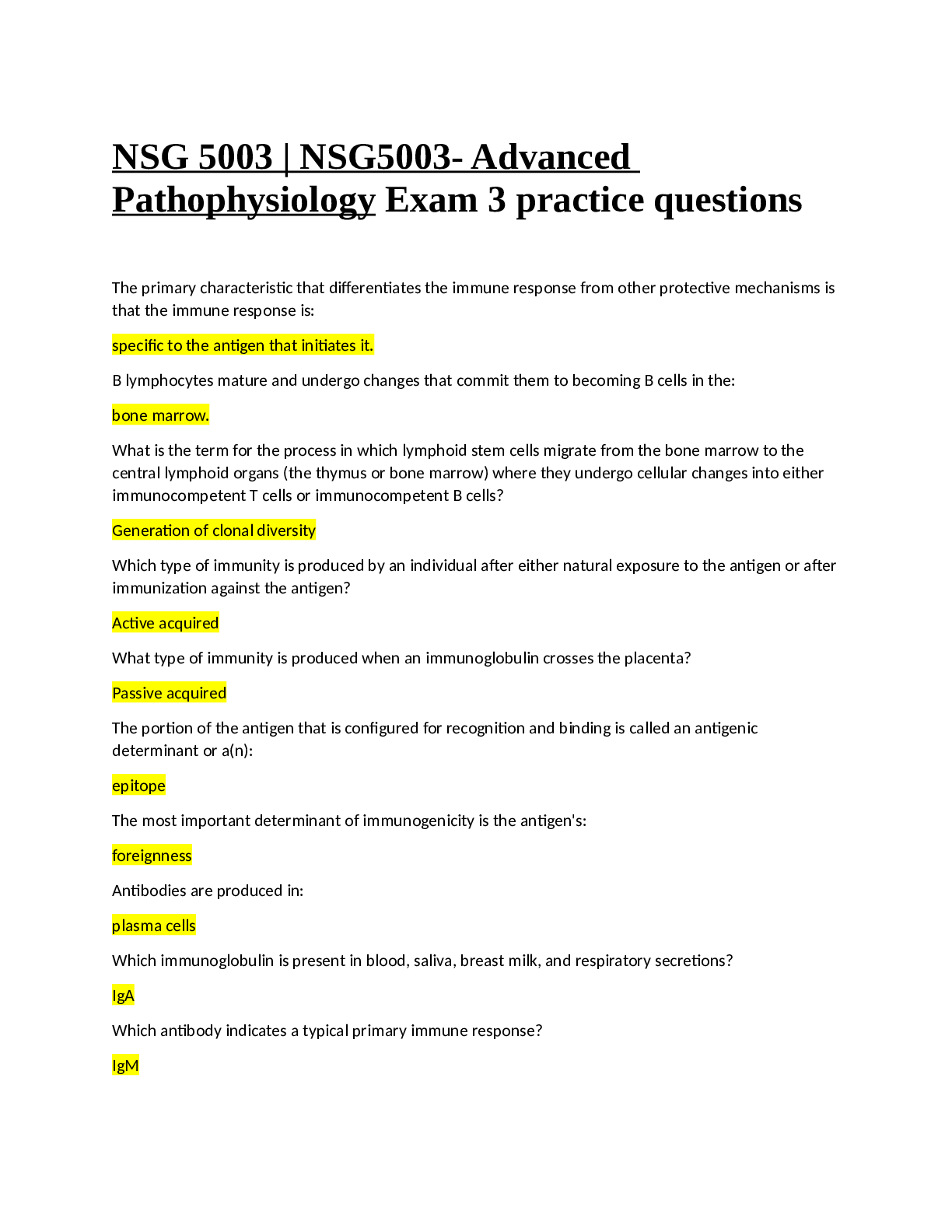
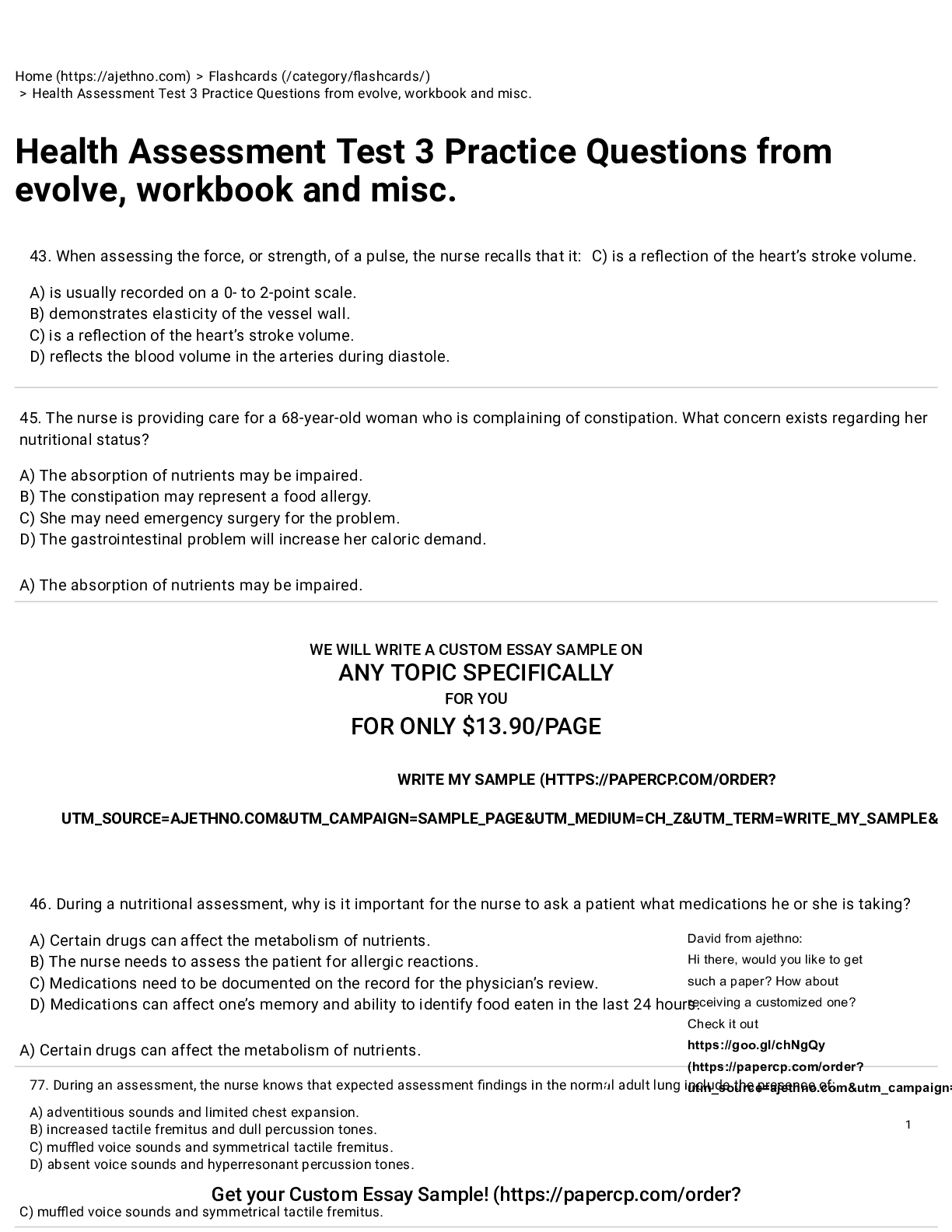
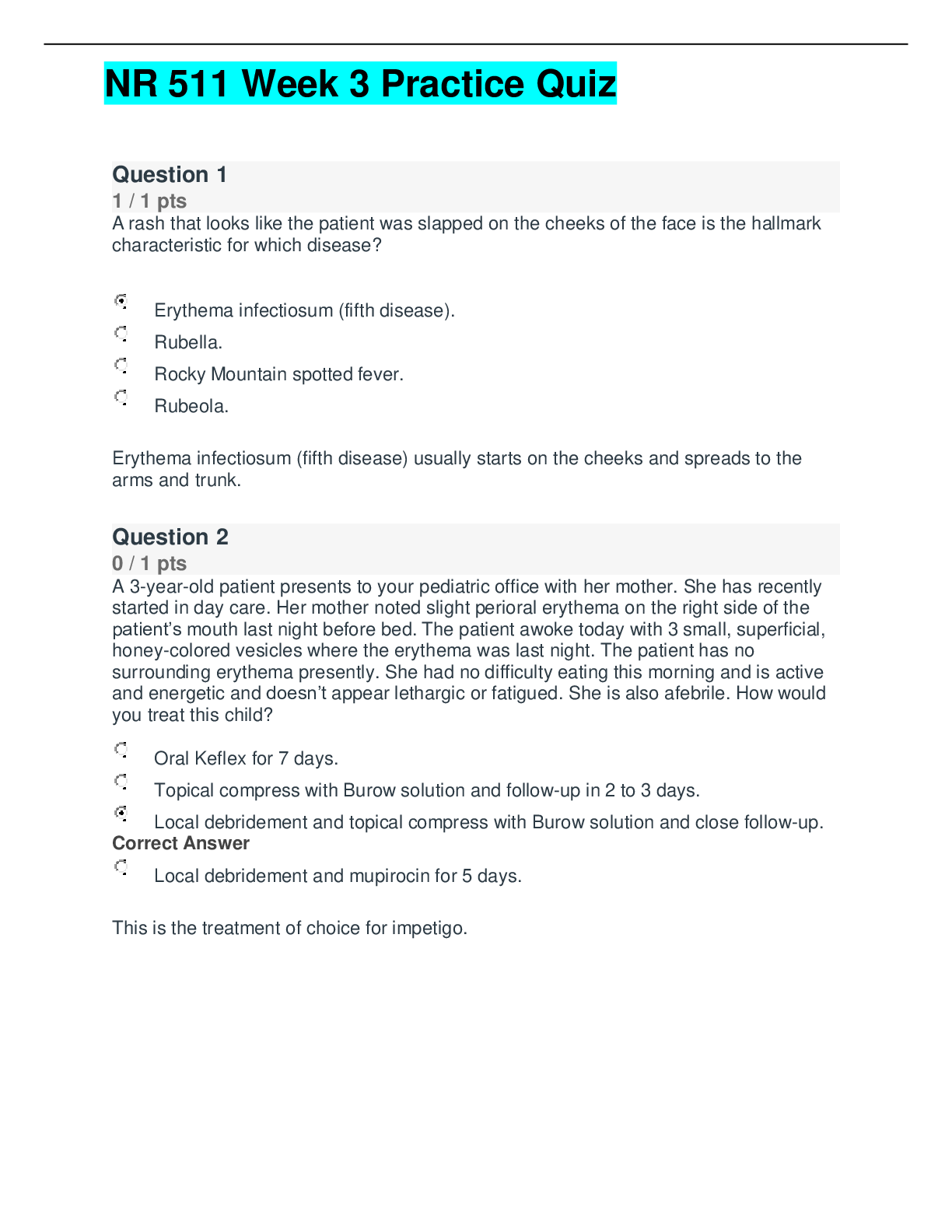
.png)

